Analysis of some examples from violinist.com
A thread on the discussion forum at violinist.com asked for users to post audio examples of good and bad intonation. The thread generated 85 responses (so far). 7 of the posts contained links to YouTube videos of living and dead violinists.
This post is an attempt to see what light Intonia sheds on the situation. I created .WAV files of each of the performances (see below for the details) and fed them to Intonia. I selected one or two passages from each and created screenshots. In most cases I pasted musical notation of the passage into the lower right corner of the screenshot.
The analysis focuses in on the unusual or noteworthy. If this tends to emphasize the errors, so be it. I withhold my personal judgment on the overall worth of each performance. However, in choosing which passages to focus on, it was a combination of my eyes (as evidenced by the red or blue notes) as well as my ears that guided me.
- Ysaye Plays Mendelssohn
- Szeryng plays Brahms
- Heifetz Plays Vitali
- A Young Violinist plays Kreisler
- Pine Plays Bruch
- Enescu Plays Bach
- Vader Plays Williams
- How the Recordings were downloaded and analyzed
Ysaye Plays Mendelssohn
This example comes from http://youtube.com/watch?v=_tQz002vTHA entitled "Ysaye plays Mendelssohn 1912". The excerpt is from late in the final movement.
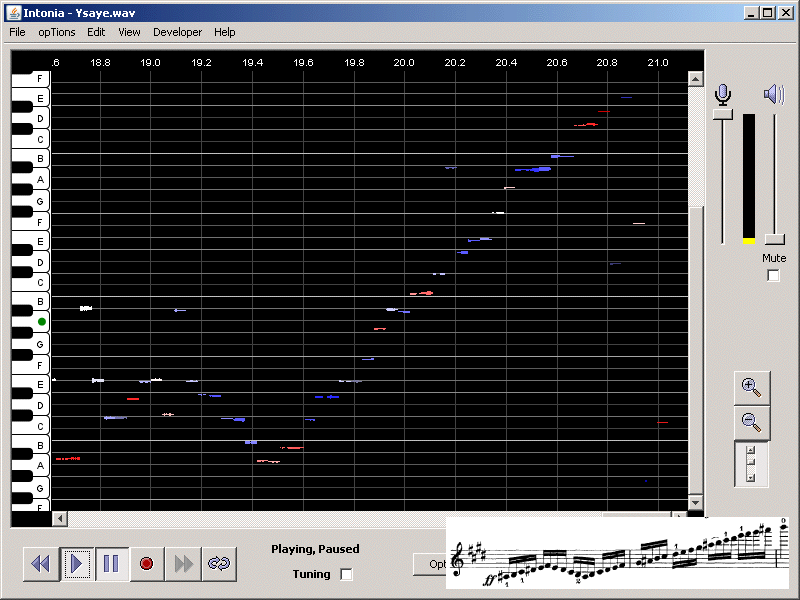
This is an incredibly difficult recording to analyze, due to the poor sound quality and the rather heavy presence of piano, but we can get something out of it. The screen shot is constructed from a B major scale. The display shows little consistency. I chose an A Frequency of 445 to match sustained notes and open strings earlier in the piece, but by that standard, most of the notes in the scale are flat.
Options: Key B Major, equal temperament, A Frequency 445, Quality Threshold 50, Min Frame Cycles 16.
Szeryng plays Brahms
This example comes from http://youtube.com/watch?v=SmJVtZLw-so entitled "Henryk Szeryng playing a Guarnerius Violin". The excerpt is from Brahms Hungarian Dance Number 17.
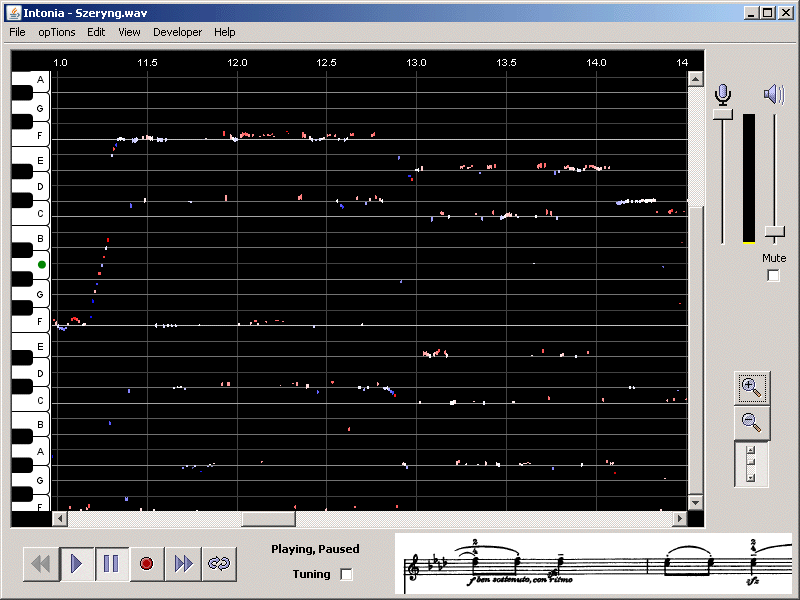
Double stops make this recording challenging for Intonia. The excerpt shows a slow shift up to F/D flat double stops followed by E flat/C double stops. The program can identify only a single note at a time, and sometimes it picks the higher note and sometimes the lower one. Nevertheless, what shows on the display does appear to be either reasonably in tune.
Options: Key F minor, equal temperament, A Frequency 440, Quality Threshold 50, Min Frame Cycles 4.
Heifetz Plays Vitali
This example comes from http://www.youtube.com/watch?v=97xlBipnzG8 entitled "Heifetz - Vitali `Chaconne` with organ".
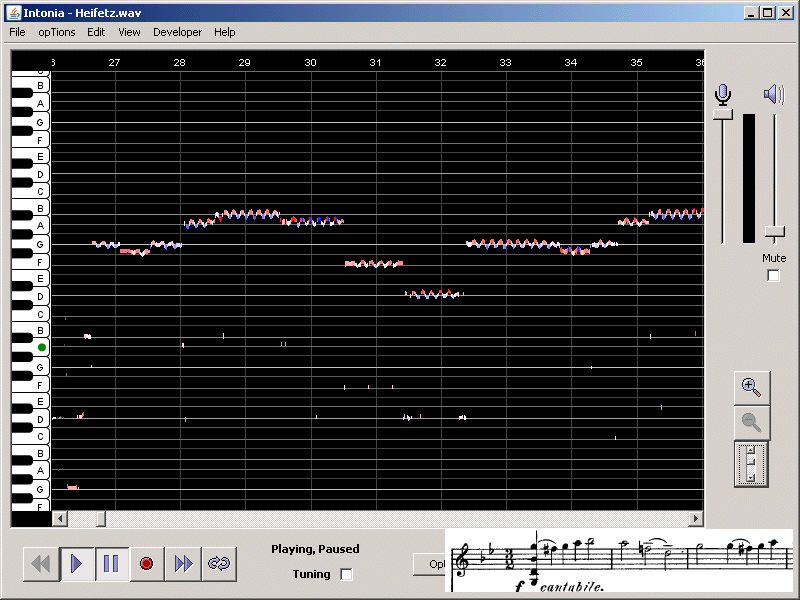
Heifetz' intonation is very consistent throughout the recording, but not in line with any precise mathematical definition of the scale. The traces look better in Pythagorean temperament than with equal temperament. Most minor seconds are very narrow, especially when it comes to leading tones. The screen shot shows the opening notes, including the 4-note chord at the entrance.
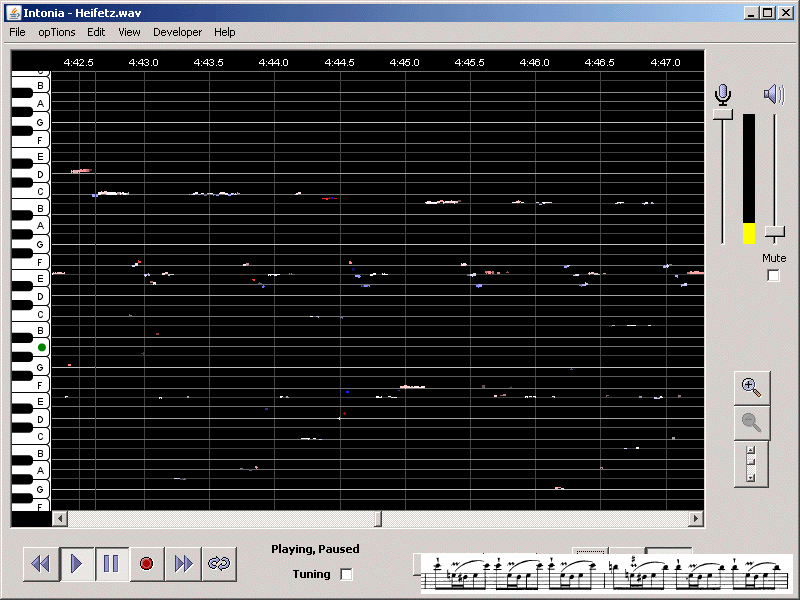
The screen shot above shows a passage midway through the piece (4:42 to 4:47) with ricochet bowing. The fast 4-note sequences show up well.
Options: Key G minor, Pythagorean intonation, A Frequency 440, Min Frame Cycles 4 for the first screen, 8 for the second.
A Young Violinist plays Kreisler
This example comes from http://www.youtube.com/watch?v=zwfOJ1g7lW4 entitled "something allegro for seph's discriminating ears:)". An anonymous young violinist plays the Allegro from Kreisler's Praeludium and Allegro.
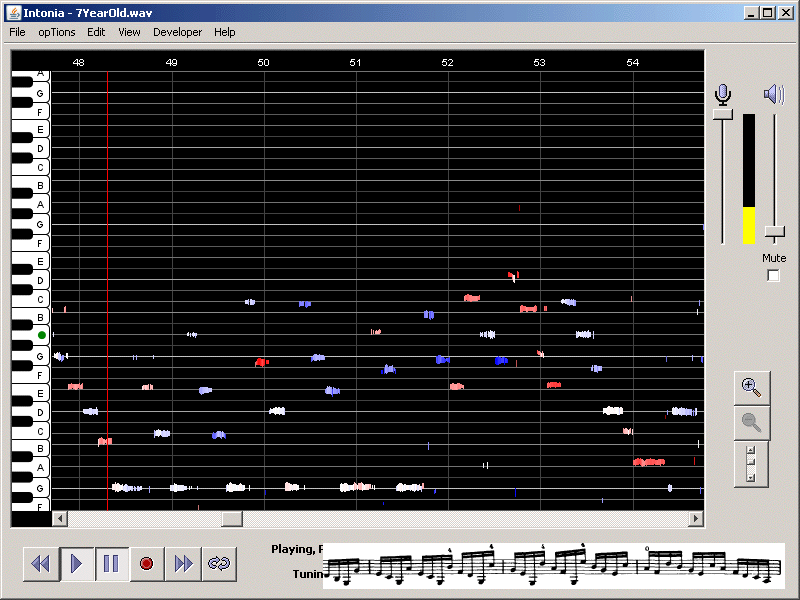
Intonation is often inconsistent. The screenshot shows a series of descending arpeggios from 0:48 to 0:54. (Intonia missed the G at 0:48.6 because the ringing open G an octave below masked the intended note.)
Options: Key G major, equal temperament, A Frequency 440, Min Frame Cycles 4.
Pine Plays Bruch
This example comes from http://www.youtube.com/watch?v=r4zClkGNsng entitled "Rachel Barton Pine - Bruch's Scottish Fantasy".
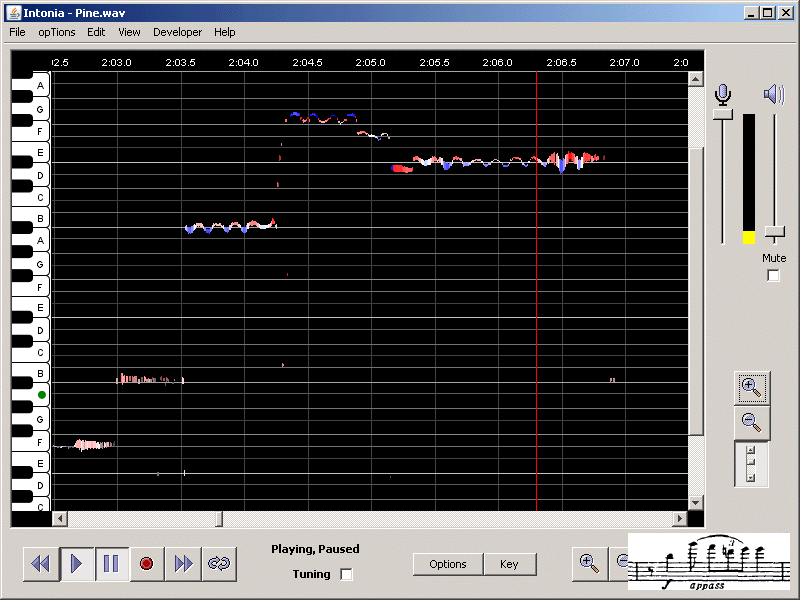
Intonation is mostly consistent, but there are a few sections that show errors. This screenshot, taken from a 6-note phrase 2:03 into the video, shows a note halfway between G flat and G natural. But the sharp D natural two notes later, is consistent with many players' preference for sharp leading tones.
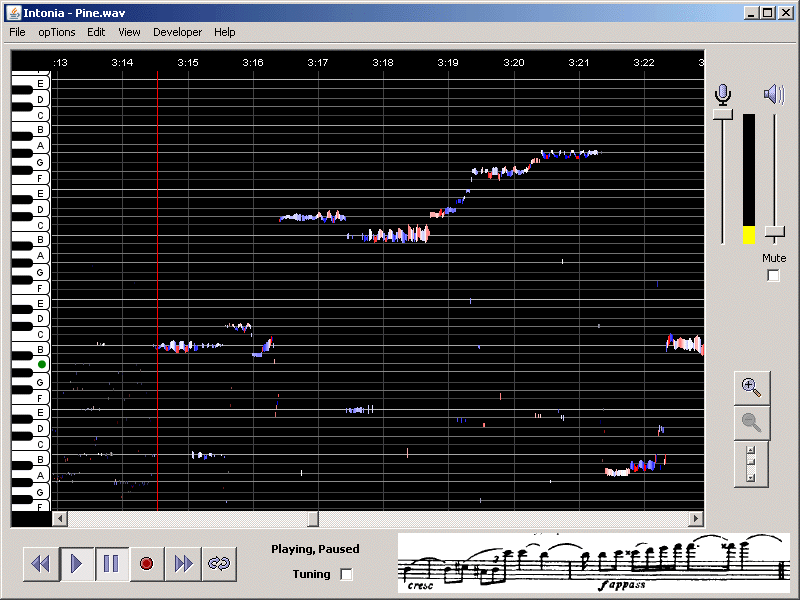
This screenshot shows another section starting at 3:15 into the video.
Options: Key E flat minor for the first, E major for the second, Pythagorean temperament, A Frequency 446, Min Frame Cycles 4.
Enescu Plays Bach
This example comes from http://www.youtube.com/watch?v=tg9MfkYHwLc entitled "George Enescu plays Bach". The selection is from the Allemande from the Bach B minor Partita.
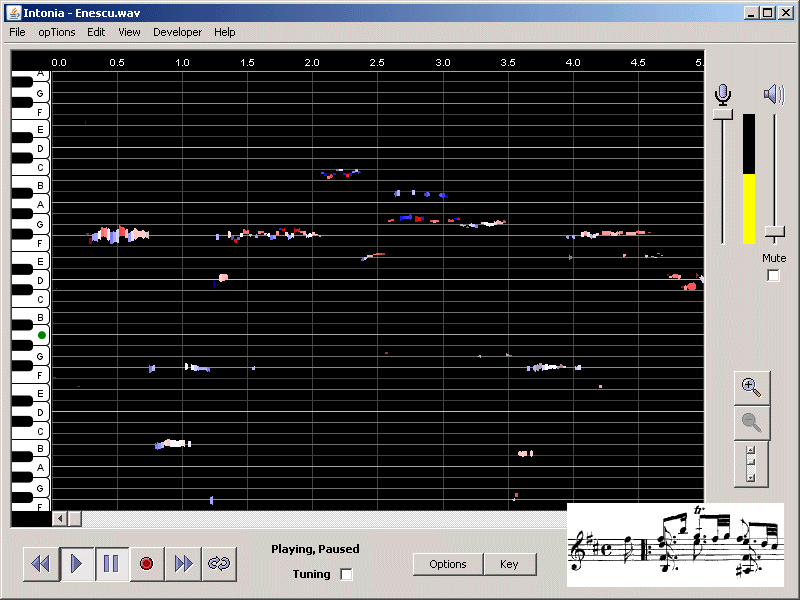
Enescu's intonation is highly unconventional. The screenshot shows the opening 5 seconds. The B followed by a trilled G/E double stop between 0:02 and 0:03 are sharp enough to be confused with the note a half step above.
Options: Key D major, equal temperament, A Frequency 445, Min Frame Cycles 8.
Vader Plays Williams
This example comes from http://youtube.com/watch?v=TD3bBQMPQ3c entitled "The Imperial March, Lord Vader on Violin". An anonymous violinist dressed as Darth Vader plays the Imperial March from "Star Wars" by John Williams. The performance is clearly intended as humor.
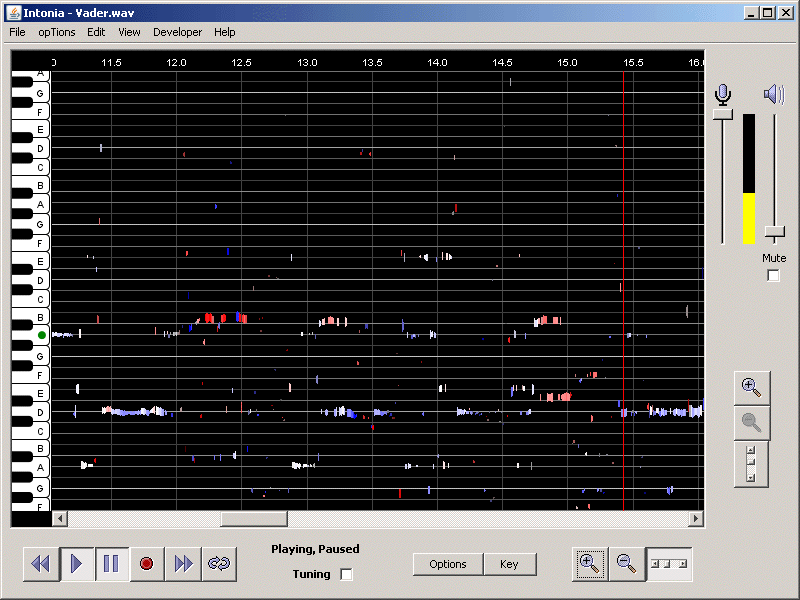
This is another difficult recording to analyze due to the droning on the G and D strings. However, a lot does manage to come through on the display. The screenshot shows a very high B flat between 0:12.0 and 0:12.5, and a sharpish B flat/E flat double stop between 0:14:5 and 0:15.0.
Options: Key G minor, equal temperament, A Frequency 415, Min Frame Cycles 4.
How the Recordings were downloaded and analyzed
Intonia was used to create a .WAV file from each of the videos. My computer is equipped with a Sound Blaster X-FI Xtreme Audio which includes "What You Hear" as an input source. The recording parameters were set to 22.05 KHz, monaural.
Intonia was started recording, then the YouTube video was played. When the video ended, Intonia was stopped. The initial silence was cut out so that the time stamps of the video and the audio files would match. The result was saved to a .WAV file for later analysis.
In producing the screenshots, I chose process options and screen magnifications that would best illustrate what I judged was significant in the music.